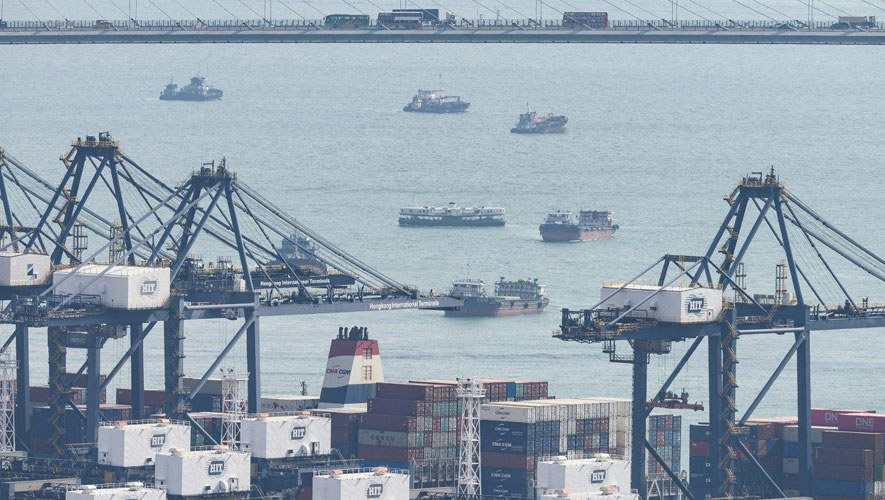Historically, since the dawn of civilisation, there has been trade finance, dating back to more than 1,000 years ago. The current trade finance market is wide and huge, with about $10 trillion of trade currently being financed, provided primarily by banks or financial institutions. Most trade financing facilities are still bilateral or based on tripartite relationships between suppliers, buyers and the banks.
For the latest Cambodian Business news, visit Khmer Times Business
Traditionally, trade finance has been a means by which importers and exporters utilise the integrity of the international banking system to ensure the safe completion of trade transactions. It forms an integral part of international, domestic and even third country or party transactions with banks providing their full range of classical trade finance products and services to complement and accommodate these universal traders.
As international trade becomes borderless, more vibrant and encompassing in an ever-evolving trade finance landscape, the mechanics and structures of trade transactions are becoming more complex and sophisticated, involving multi-parties, multi-countries and multi-settlement arrangements. Banks cannot stand still or they will be left behind or become irrelevant in the realm of the present trade financing initiatives. They have to constantly change and realign themselves to fit into their new financial roles.
Trade financing represents the short-term financial instruments and solutions that are offered by banks to their customers, comprising large corporate, mid-sized companies and small and medium enterprises (SMEs), to facilitate both international and domestic trade. The tenure of trade financing is broadly categorised into short term (up to one year), medium term (between one and five years) and long-term (exceeding five years for capital goods), which will cover trade finance products and services ranging from the simple financing of open account trading to the more co-ordinated supply chain management and financing of account receivables and payables.

Banks, as business partners, will provide to their “trade customers (importers, exporters and local traders)” the appropriate trade financing facilities and trade credit limits, thereby undertaking to finance their imports and local purchases by offering trust receipt advances, foreign currency trade loans, invoice financing, supply chain financing etc or to extend financing for their exports and local sales by offering bills purchased, letters of credit bill negotiation, invoice financing, supply chain financing etc. Besides the trade financing facilities, banks will also include in the letters of offer the evergreen trade services products such as issuance of letters of credit and bank guarantees and handling of collections bills. Some banks go the extra mile by enticing their trade customers with financing under “with or without recourse basis” and encouraging them to make use of “avalised” bills of exchange (when a company asks the bank of a trading partner to guarantee a bill of exchange) and promissory notes to capitalise on the “off balance sheet financing” options.
Importers and exporters, as customers of the banks, must also understand and be aware of how banks determine the pricing of their trade finance products and services, whether it is derived from the bank’s own product costing or it is as recommended by the Association of Banks or the Central Bank. Besides pricing, customers should also find out how their banks fund their trade loans, whether they are supported by their own internal funds, by inter-bank borrowings, through customers’ deposits or by refinancing funds from an export/import bank or a central bank. How a trade customer is charged by his banker bears reflection on the bank’s pricing and funding mechanisms and the trade customer’s credit and risk profile, besides the securities he has pledged.
While we, as importers, exporters and bankers focus on pushing for sales and making money for our respective entities, we must not lose sight of the risks associated with the trade finance products and services which include, among others, bank risk, country risk, documentary risk and regulatory risk relating to governing laws and jurisdictions. In addition to the inherent risks and compliance issues, we must also take cognisance of the sanctions, anti-money laundering (whether trade-based or otherwise) and anti-terrorists financing acts placed by governing statutory bodies and authorities worldwide. The new Incoterms 2020 (global essential terms of trade for the sale of goods) may pose a challenge to both customers and banks but they can certainly be overcome by understanding the associated risks and responsibilities.
Trade frauds, collusions and creative attempts by importers, exporters and local traders to cheat one another or the banks, will continue to be perpetuated by fraudsters, dishonest traders and supporters of terrorists. Trade disputes, operational mistakes and staff oversights will also continue to exist, unless there is no human intervention in trade negotiations and handling of trade transactions. In response to all these threats and challenges, banks and companies must introduce stricter operational controls, closer monitoring and enhanced documentation to ring-fence and contain these inherent risks, trade complexities and shortcomings.

Trade finance helps importers and exporters expand their trade business across boundaries, increase their cash flows and provide the necessary safeguards for the goods and payments. Likewise, by providing trade financing products and services, banks will consistently generate fee and interest income and foreign exchange gains plus reaping the benefits of spin-off businesses and selling opportunities from all their trade customers. Looking beyond the conventional trade financing products and services, banks may want to consider offering structured trade financing to the more sophisticated and well-informed trade customers, which will certainly boost the banks’ bottom lines. Banks that offer such “out of the box” trade structures and financing arrangements will have the competitive and comparative advantage over their competitors while their importers and exporters will enjoy a wider variety of trade financing alternatives.
Besides continuing to focus on sustaining and strengthening relationships with their existing customers, banks must also explore new ways and means to increase their customer-base and enhance the banks’ total trade lines’ exposure.
All relationship managers, branch managers and sales and origination officers must be focused and aggressive on how to solicit for incremental usage of trade facilities and trade lines, what trade products to sell specifically and where to look for potential new trade customers.
Let us work with you to achieve your objectives and key performance indicators. Let us show you the way… the Australia New Zealand Institute way.




